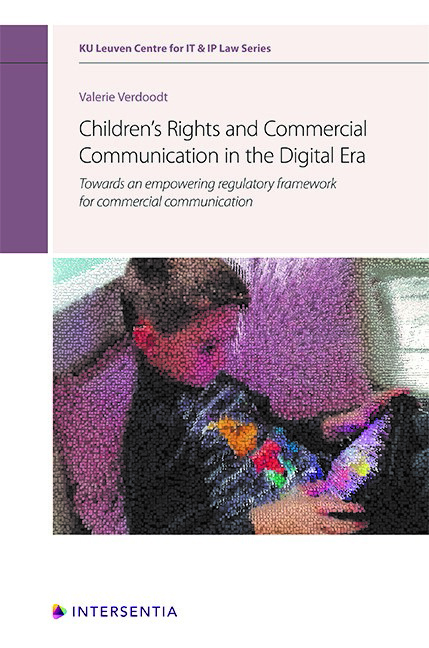 Children's Rights and Commercial Communication in the Digital Era
Children's Rights and Commercial Communication in the Digital Era Book contents
- Frontmatter
- Preface
- Contents
- Abbreviations
- Introduction
- PART I CHILDREN'S RIGHTS AND ADVERTISING LITERACY IN THE DIGITAL ERA
- PART II ASSESSMENT OF THE REGULATORY FRAMEWORK FOR COMMERCIAL COMMUNICATION IN LIGHT OF CHILDREN'S RIGHTS
- PART III ASSESSMENT OF NATIONAL ARIS IN THE AREA OF COMMERCIAL COMMUNICATION
- CONCLUDING REMARKS AND RECOMMENDATIONS FOR THE FUTURE
- Bibliography
- Miscellaneous Endmatter
- Frontmatter
- Preface
- Contents
- Abbreviations
- Introduction
- PART I CHILDREN'S RIGHTS AND ADVERTISING LITERACY IN THE DIGITAL ERA
- PART II ASSESSMENT OF THE REGULATORY FRAMEWORK FOR COMMERCIAL COMMUNICATION IN LIGHT OF CHILDREN'S RIGHTS
- PART III ASSESSMENT OF NATIONAL ARIS IN THE AREA OF COMMERCIAL COMMUNICATION
- CONCLUDING REMARKS AND RECOMMENDATIONS FOR THE FUTURE
- Bibliography
- Miscellaneous Endmatter
Summary
On 20 November 2019 the United Nations Convention on the Rights of the Child celebrates its 30th anniversary. In 1989, when the Convention was adopted, children came across advertising on television, on billboards in the street, in shops and through leaflets in their mailbox. Over the past 30 years, the way in which children are targeted by advertisers and the formats that are used have changed significantly. Think of advergames, influencer marketing, and behavioural targeted advertising. The specific features of these formats, such as their immersive, interactive and personalised nature, make it difficult for children to understand the commercial and persuasive intent of the commercial messages directed at them.
Valerie Verdoodt's doctoral research presents an original and timely fundamental rethinking of the regulatory framework of commercial communication from a children's rights perspective. Offering a carefully considered, well-documented overview and in-depth evaluation of several legislative frameworks, policy documents, self- and co-regulatory initiatives and literature from a variety of disciplines, she has worked towards the development of children's rights-inspired recommendations for an empowering regulatory framework for online commercial communication aimed at children. It is a subject with great societal relevance which contributes to the further realisation of children's rights in the digital environment.
Dr. Verdoodt convincingly concludes that the children's rights framework requires a balance between empowering children to cope with advertising (i.e. by educating them and providing them with the necessary opportunities to practice their commercial decision-making skills) and protecting them against harmful or misleading advertising and advertising that processes their personal data in an opaque manner (i.e. by recognizing the limitations to advertising literacy and providing additional protections). She found that, at present, the regulatory framework puts too much emphasis on empowerment with much of the responsibility resting on the shoulders of children and their parents, thereby tipping the empowerment-protection scales out of balance. She helpfully suggests that combining all the elements of the regulatory toolbox is the only way to restore that balance. This toolbox includes inter alia the enhanced enforcement of the regulatory framework, stimulating the collaboration between regulatory bodies, improving the structure and enforcement of advertising Alternative Regulatory Instruments and carrying out children's rights impact assessments that respect the multi-dimensionality of rights, when developing advertising and marketing campaigns.
- Type
- Chapter
- Information
- Children's Rights and Commercial Communication in the Digital EraTowards an Empowering Regulatory Framework for Commercial Communication, pp. v - viPublisher: IntersentiaPrint publication year: 2020
